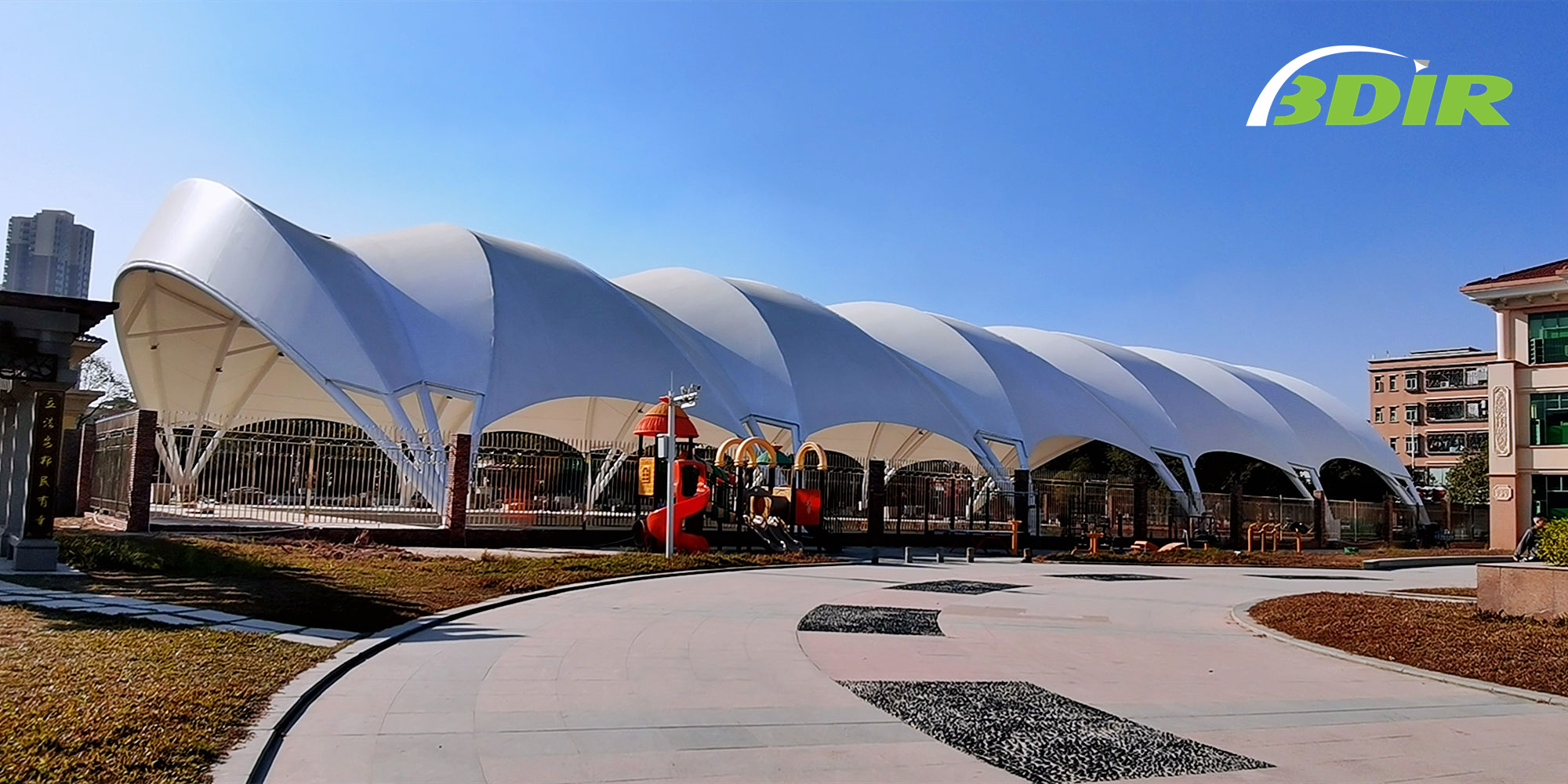A tensile structure refers to roofing that adopts stretchy fabrics and draws stability from tension rather than compression. It is gaining popularity amongst temporal outdoor structures because they are versatile, lightweight, and cover large space spans.
The technology behind a tensile roof stretches back to old age. Native communities in the Sahara used leather to create shelter. The Romans seemed to have had a soft spot for tensile structures. But the practice died prematurely in the mid-20th century thanks to limiting technology.
Today, the fast-paced technology favor versatility and developers take advantage of the fabric characteristics to create elegant structures. It is now easier to design classy membranes that span wider areas.
It is safe to say that tensile structures fit several occasions. Large projects benefit the most because they are economical and require less material to cover an expansive area, unlike traditional roofing. Further, it features light, flexible and robust material that is easy to transport.
When you look to install a tensile structure, it is prudent to understand the dimensions defining it, including;
Types of tensile structures
Although tensile structures fall under three categories: membrane, mesh, and pneumatic systems, their principles are tied to the basic elements of saddle and cone. But it does not imply that structures are built on stone. You can incorporate your specifications to design a system that features your requirements.
When you desire a warp rectangle, the saddle is magical at delivering a structure with four points, two highs, and two lows. Conversely, the cone creates excellent volcanic shapes that combine to create spectacular architecture.
Membrane tensile structure is a powerhouse of flexibility. Developers can tweak the form to create practical, iconic shapes. And because the technology use cables to distribute tension, it's easier to build stunning, all-weather structures that withstand forces of varying magnitude.
The common tensile shapes fall under three categories that are;
- Linear tensile structures
- Three-dimensional structures
- Stressed tensile structures
The different shapes allow developers to build unique architectural designs fitting other spaces and work to elevate a target area.
The functionality of tensile structures
Developers tout tensile structures to function well as roofing on outdoor structures requiring expansive coverage. They let in a generous amount of natural light, and individuals can enjoy views free from obstruction.
For this reason, they are ideal when building facades, theaters, and stadiums. Furthermore, they are cost-effective and do an excellent job providing shelter from direct sunlight and rain. Facades love them because, aside from accentuating the general look, it offers an invaluable coziness thanks to the substantial amount of light it allows in.
The benefits of tensile structures
Tensile structures parks invaluable benefits. Other than being cost-effective, they work to add aesthetic appeal, an element that traditional architects lack. One can argue that installing durable and elegant structures has never been easy. But with the emergence of tensile structures, it takes the shortest time possible to erect a sleek design spanning a wide area without breaking a bank.
And the beauty of tension structures is amazing because they require low maintenance and are durable enough to withstand harsh weather conditions. Coupling long-lasting materials with the ability to let in natural light translate substantially lower operating costs.
And the real deal, the flexibility allows developers to overhaul complex terrains with less hassle. Engineers can even incorporate custom ideas to create insanely bold shapes with heat effects in mind.
Key takeaway
Tensile structures are not only economical; they are excellent at infusing aesthetic value. Therefore, installing a tension-inspired one instead of investing in brick and mortar roofing will benefit you immensely. You'll cut down costs by a considerable margin and, at the same time, create a breathtaking atmosphere.

